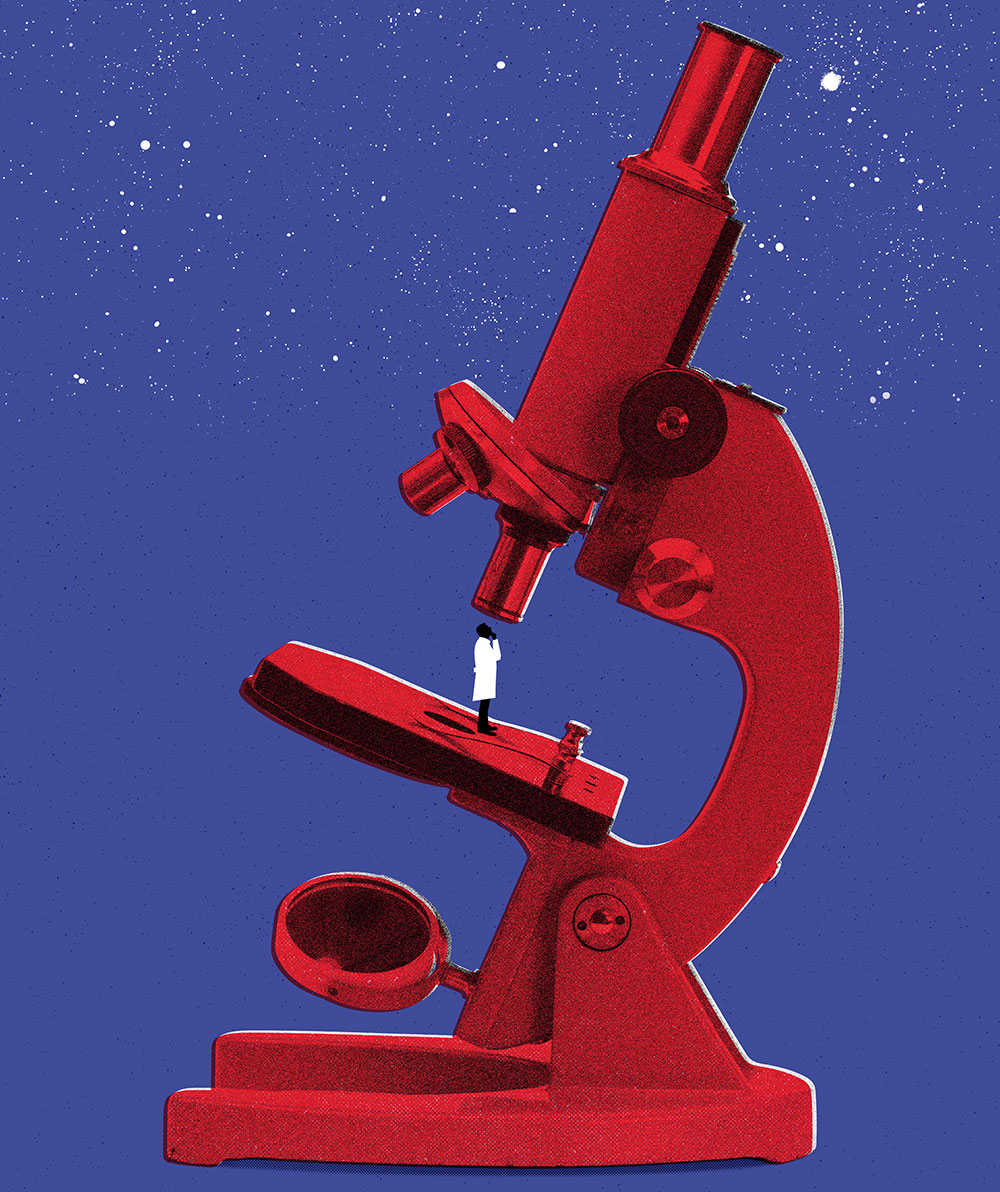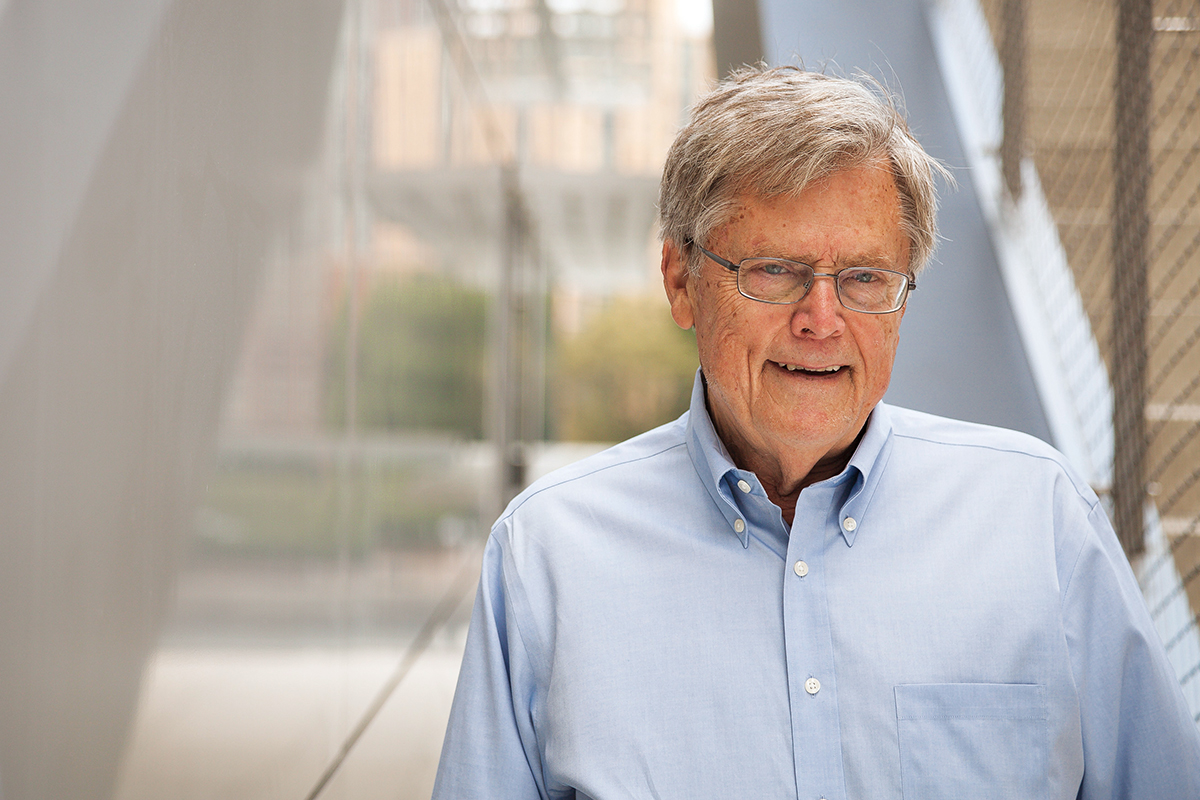
Interview
Biology could be so much more
Every aspect of who you are affects your health, from your genes to your income bracket; yet few bioscientists look beyond molecules and cells. Bruce McEwen says it’s time we broaden our perspectives.
By Eva KieslerIf there’s one thing all scientists should be able to agree on, it’s that the world is incredibly complex. To even begin to make sense of it, you need to specialize—to dedicate yourself to untangling one aspect of reality without letting the rest distract you.
Whether you’ve chosen to study the function of an enzyme or the causes of a stock-market hiccup, specialization has long been the ticket to success in academia. It’s how you obtain the training and knowledge needed to solve complicated problems, find a community of colleagues to work with, and keep yourself employed.
But at some point, all that hard-earned expertise can get in the way. After all, nature isn’t neatly divided along disciplinary lines, so understanding it requires an integrated way of thinking. Put it this way: There’s a lot you can’t see when your eyes are glued to the microscope.

It’s a problem that Bruce S. McEwen often thinks about. A neuroendocrinology specialist and self-described nerd, he is wary of the fact that the more you become an expert on something, the more isolated you become. So throughout his career, McEwen has challenged himself and those who train in his lab to avoid forming silos, relate their work to other disciplines, and explore new ways of thinking.
It is not inconceivable that this mind-set is part of the lab’s secret sauce. Not long after joining Rockefeller in the mid-1960s, McEwen began establishing himself as an international authority in research on stress, transforming our understanding of the brain—specifically by challenging conventional wisdom about how it communicates with the rest of the body. At that time, many scientists believed that the brain’s architecture was incapable of changing with experience. In other words, the adult brain was considered neuroanatomically stable and fairly self-sufficient, a kind of CEO issuing instructions to subordinate body parts without receiving much feedback.
However, McEwen and his colleagues revealed that the brain-body connection is in fact reciprocal: Neural circuits deep inside the brain respond to various body commands mediated by stress hormones like cortisol, metabolic hormones like insulin, and sex hormones like estrogen, prompting lasting changes in the brain’s basic structure and functioning.
The lab’s continuing work on stress and its impact on the brain has implications for a wide range of conditions, including Alzheimer’s, depression, PTSD, and normal aging. In a sense, it is furthering our understanding of how all aspects of the human experience, from cognition to constipation, hang together. And it is lending scientific clarity to holistic medicine—an ancient concept that until recently didn’t get much attention from the medical establishment—and according to which health care professionals need to consider the emotional, environmental, social, and spiritual aspects of patients’ lives, along with the physical and biochemical factors.
This is why McEwen, the Alfred E. Mirsky Professor, is now widening his lens beyond conventional biology questions to also work on sociopolitical ones—asking, for instance, why virtually all public-health problems in the United States disproportionally affect poor people, and why those born in poverty are predisposed to remaining poor.
We asked him to talk to us about what a broader understanding of human health and disease might look like.
Much of your work focuses on how life experiences reshape the brain, affecting our ability to cope with stress, for example. What do we know about the biology of this rewiring?
Much of our understanding has come from modern research on epigenetics, a field interested in the processes that cells rely on to activate the right genes at the right time.
While DNA is something we are born with, and although it gives us certain possibilities and limitations, it does not in and of itself account for the changes our bodies undergo in response to experiences of all kinds—including what we eat, where we live, how much we exercise, and whether we have experienced abuse or neglect during childhood. These changes are epigenetic in nature, and they begin in the womb, continuing throughout life until we die. My lab has found that epigenetic changes can literally reshape the nervous system. We first observed this in the brain’s hippocampus, which regulates emotion and memory, and those findings opened the door to similar discoveries in other brain regions.
Only a few decades ago, scientists believed that an adult’s brain doesn’t change. The reasoning was that a sophisticated machine like the brain is not to be messed with and must therefore remain static once it has fully developed. So when it emerged that the adult brain can in fact be induced to grow new cells and neural connections—work pioneered by Rockefeller’s Fernando Nottebohm and later built upon by scientists in my lab and elsewhere—it was a real paradigm shift.
Is the brain’s malleability good news or bad news?
It is both. On the negative side, it’s becoming increasingly clear that toxic stress can alter the brain in problematic ways. For example, children who grow up in chaotic households with abusive or neglecting parents are more likely to lose certain cognitive skills, and their overall brain development may be limited. These limitations may later be passed on from one generation to the next, interfering with people’s capacity for proactive planning and their ability to self-regulate their thoughts and feelings. This will affect their performance in school and in society, and ultimately put them at risk of a host of diseases—not only obvious ones like anxiety, substance abuse, and depression, but also Alzheimer’s, diabetes, cardiovascular disease, and others.
All of this suggests that for many diseases, a pill will not get us very far. To cure a disease, we will need to understand the biological and behavioral causes of that disease as well as the whole gamut of factors shaping people’s lives.
Neural plasticity goes both ways. The brain can change to make us sicker, but it can also change to make us healthier and more resilient.
On the bright side, neural plasticity goes both ways. If the brain can change to make us sicker, it can also change to make us healthier and more resilient. We are learning that the negative impact of toxic stress is treatable, especially early in life. In infants and young children experiencing adverse events, there are opportunities to reprogram the brain, for instance with interventions that promote nurturing family relationships and strong community support. In fact, studies have shown that the beneficial effects of such interventions can last for decades.
And this isn’t only true for children: In almost every stage of life there are things we can do to improve our brain-body functions. We’re not stuck the way we are.
Yet so much research, even in neuroscience, is focused on drug development. Is that a mistake?
There is an imbalance here, certainly. Consider that even the most successful drugs don’t work for everyone. Take depression, for example: A pill like Prozac does not work in 60 to 70 percent of patients, including some with treatment resistance caused by early-childhood trauma. And even for people who respond to the drug, combining it with some form of concurrent behavioral therapy is important.
Efforts are under way to develop new drugs that will work for more people, but in the meantime, how do we help the nonresponders?
Drugs have come to occupy so much of our mental space. We constantly see ads for new drugs, and they can steer us away from doing the hard work: making lifestyle changes that have been shown to promote good health.
It’s unequivocal that many conditions can be alleviated or prevented by what I call top-down treatments: doing things like getting more sleep, eating healthier, increasing one’s physical activity, alleviating loneliness, establishing a positive social network, and learning to self-regulate the nervous system through mindfulness training. It’s ultimately up to us to take control of our bodies and our lives—possibly with the help of pharmacologic agents, which sometimes can increase our ability to make these lifestyle changes.
Is the common denominator of these top-down treatments that they help reduce stress?
Well, it depends on what you mean by stress. I think it’s helpful to think beyond this word, which has acquired many different meanings—people talk about good stress versus bad stress, for example. My colleagues and I coined a concept called allostatic load to describe how experiences of all kinds, and the conditions under which we live, affect the brain and the body.
The organism has several systems in place—including the neuroendocrine, metabolic, and immune systems—that normally help us adapt to new situations. It’s when these systems become overused or dysfunctional that the mind and body begin to wear and tear.
How can scientists get better at seeing the big picture?
Just as scientists tend to create silos around our own academic fiefdoms, so do institutions and funding agencies define their priorities in the context of specific research areas. But in recent years, there has been a push from both government and private agencies to bring scientists together from diverse fields to tackle humanitarian problems on a national scale. For example, I’m a member of the National Scientific Council on the Developing Child, which brings together biomedical and social-science experts. Our goal is to provide the scientific foundation needed to develop sensible policies that we hope will help make people’s lives better.
It’s hard to overstate the importance of having access to this kind of convergent-science teamwork. I’m lucky to have a collaboration with my brother, Craig A. McEwen, a sociology professor at Bowdoin College specializing in law and mediation. Craig is very active in his community. He’s an advocate of prison reform and also works to help those with limited resources. He has taught me a lot about the practical aspects of improving the lives of Americans struggling with poverty, hunger, or homelessness, and that has influenced how I frame questions as a neuroscientist.
So can we solve medical problems by addressing socioeconomic issues? What would that look like?
It is certainly a daunting task, but we can no longer ignore the fact that these issues go hand in hand. They won’t be solved by scientists alone but will require all of us to engage as citizens and voters. We won’t see significant improvements in public health unless we deal with economic segregation, for example. The fact that the nation’s poor keep getting poorer and sicker isn’t only a social-justice problem; it is also a huge economic burden on our country that negatively impacts everyone’s welfare. Addressing it must be a bipartisan priority.
Fortunately, there are examples of successful policy changes that our nation can learn from. In some Scandinavian countries, for example, prison reform that involves helping convicts heal and behaviorally retrain has helped reduce incarceration rates and improve prisoners’ health outcomes. Now, you might argue that the United States faces a very different set of challenges that comes with being a big and highly diverse nation, and that’s true. So we must find our own way to implement social change. We may have to do it more gradually—in a state-by-state fashion rather than at the federal level, for example. But whatever it takes, we have to get it done.